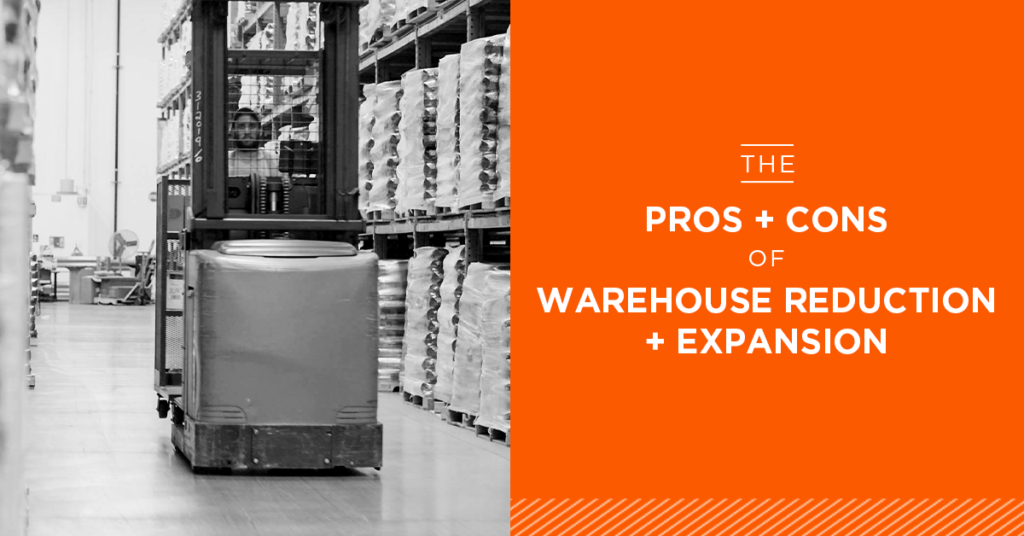
Is Less More? Evaluating Warehouse Reduction vs. Expansion in Supply Chain Management
When optimizing your warehousing and distribution strategy, a key question arises: Should you reduce or expand your number of warehouses? Some businesses find that reducing warehouse locations simplifies operations and cuts costs, while others benefit from increasing storage and fulfillment centers to improve shipping times and customer satisfaction.
At King Solutions, we’ve helped clients navigate both strategies—some have streamlined their supply chains with warehouse consolidation, while others have expanded for greater efficiency. But which option is best for your business? Let’s explore the pros and cons.
Cost Considerations: Warehouse Reduction vs. Expansion
The first and most common question is: What are the cost implications? Warehouse reduction can lead to significant savings in:
- Real estate and rental costs (Learn more about warehousing costs)
- Labor expenses
- Utility bills
- Warehouse management and maintenance
The logic is simple: fewer warehouses mean lower operational costs. Even if you use third-party warehousing solutions, reducing the number of facilities can decrease expenses across the board.
Potential Cost Increases with Warehouse Reduction
However, reducing warehouse locations can lead to increased:
- Shipping distances and costs (How warehouse location impacts shipping costs)
- Transit times, affecting customer expectations
- Risk of product damage during longer shipments
While reducing warehousing costs might seem appealing, longer transit times and higher freight costs could offset savings, making this decision highly dependent on your shipping volume and customer expectations.
Customer Experience: Speed vs. Cost Efficiency
Consumers expect fast and affordable shipping, whether in e-commerce fulfillment or large-scale B2B distribution. More warehouse locations mean orders can be processed and shipped closer to the end customer, leading to:
- Faster delivery times (Why faster delivery matters in supply chain management)
- Lower shipping costs (in some cases)
- Greater customer satisfaction
However, operating multiple fulfillment warehouses doesn’t always guarantee cost savings. Warehouse efficiency also depends on labor expenses, storage fees, and carrier costs. Supply chain optimization requires balancing warehouse locations with shipping expenses to create the best customer experience.
/industry-wired/media/post_attachments/wp-content/uploads/2023/02/AdobeStock_325082493-1024x540.jpeg)
Risk Management: The Impact of Warehouse Locations
Reducing the number of warehouses simplifies logistics but increases risk. If a facility is impacted by:
- Natural disasters (hurricanes, floods, fires) (Supply chain risk management strategies)
- Labor strikes or operational shutdowns
- Supply chain disruptions
your entire distribution network could suffer. Having multiple warehouses spreads risk and ensures continued service.
For example, if you operate just two warehouses—one on each coast—a shutdown in one location can cripple half your supply chain. By adding a Midwest distribution center, you create a safety net for handling shipments in case of disruptions.
Which Warehousing Strategy is Right for You?
The decision between warehouse consolidation and expansion depends on:
- Your business size and budget
- Your shipping needs and customer expectations
- Your supply chain resilience and risk tolerance
At King Solutions, we take a data-driven approach to supply chain optimization, helping businesses determine the ideal number and location of warehouses for their needs. With warehousing and distribution centers in Minneapolis, we provide scalable solutions for efficient logistics and fulfillment. (Explore King Solutions’ warehousing services)
Optimize Your Supply Chain with King Solutions
Whether you need warehouse consolidation or expansion, we’re here to help. Contact our team today to discuss how we can improve your supply chain efficiency and reduce logistics costs while ensuring fast, reliable shipping.
Let’s build a smarter supply chain together.







 Joel Rice
Joel Rice